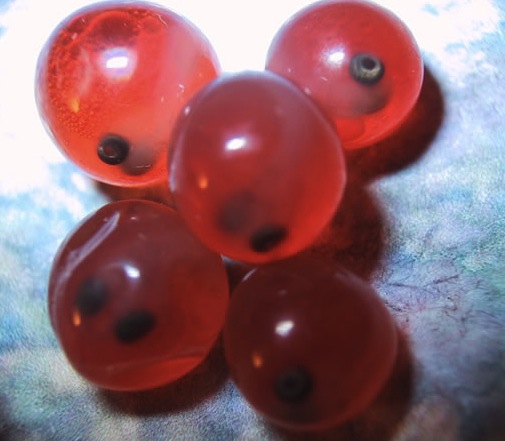
Products
Alaskan company commercializes fog incubation
January 30, 2014 By Vladislav Vorotnikov
 Redd Zone and ARED
Redd Zone and AREDDeveloping fish eggs require a continuous supply of clean, oxygenated water at an appropriate temperature supplied at a rate sufficient to wash away metabolites. Clearly there are two basic options: a flow-through system providing a continuous supply of water, or a recirculation system where the water is continuously cleansed and returned to the incubator. But there is a third option. If the water is supplied in the form of a fog that is delivered in sufficient quantity to maintain 100% humidity, deliver sufficient oxygen, and carry away metabolites, the overall volume of water required can be considerably reduced
Nearly ten years ago the founders of Redd Zone assisted ARED, INC. of Alaska with the further development of their “Moist Air” incubation system. The initial need was to overcome issues of cost, complexity and versatility. The early Moist Air incubator weighed 800 pounds (365kg) and was expensive. It also projected 20-micron water droplet missiles at the eggs. Redd Zone wanted a gentler way to maintain 100% humidity over the eggs, plus a reliable, easy-to-operate system. They also needed a range of smaller units that could be moved easily from place to place.
The first attempt was made using a sonication unit designed to make fog for special theatrical effects, but unfortunately the water supply failed after 10 days of operation, and the eggs died. But, given a reliable water supply, it was clear that the system would work. After three years of trial and error a simple yet elegant and efficient system has been designed.
The fog generated by sonication with a nebulizer has a droplet size of about 1micron, and is circulated over the trays of eggs in the incubation chamber. The system can operate on virtually any water supply; even domestic water providing a carbon filter is attached to remove chlorine. If pathogen-free water is used, no prophylactic treatment for fungus is required. With a reservoir. water consumption can be reduced to less than a gallon per hour. Egg development can be accelerated by adding a submersible heater in the reservoir, or slowed by adding a chiller capable of temperatures as low as 40°F (4.4°C).
The incubators have only two moving parts, a 24V circulation fan and a nebulizer that is run off of a 12V transformer. Both are designed to run continuously to provide a dependable environment for fertilized eggs to develop.
Three sizes are available; the smaller I-UP 10, tabletop unit, will hold about 90,000 coho salmon eggs and the larger I-UP 24 more than twice that. The largest, 48-tray unit will hold 400,000 eggs. Typically, water hardened eggs are loaded on stainless steel trays, slid into position and the unit turned on to provide continuous 100% humidity, providing oxygen and sufficient moisture to remove metabolites. When the unit is operating without chilling, no water is re-circulated, and it requires a liter per minute to keep the nebulizer at the same temperature as the incoming water. When in chill mode the liter per minute is cycled back to the reservoir and chiller. In that mode the only water use is that which becomes fog, about a gallon per day. The fog that condenses on the eggs exits the unit without re-use so there is no build-up of CO2 or metabolites.
For more information contact: Tod Jones at tod_j@hotmail.com.
Print this page





